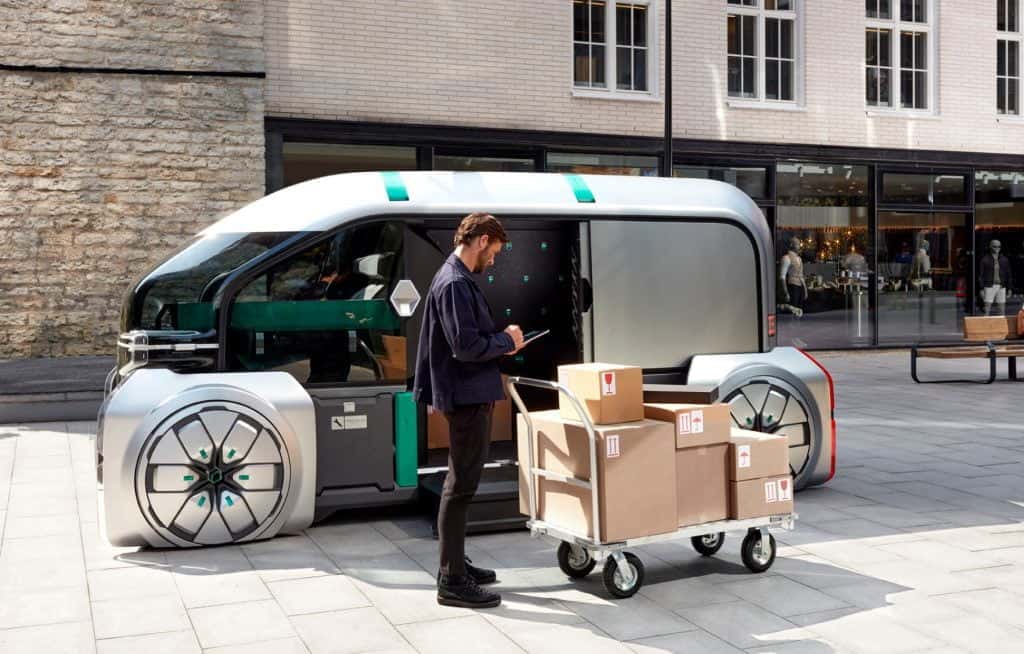The race is on to bring autonomous vehicles to market. However, big tech and automotive companies around the world are competing not just to be the first to perfect the technology, but also to figure out the type of business model that will pave the quickest path to profitability – and solving the last-mile delivery problem for retailers, courier companies and logistic operators is looking to be a strong contender.
Table of Contents
ToggleMuch of the early conversations surrounding self-driving tech were largely focused on transporting passengers from A to B to Z – either by getting consumer-owned autonomous vehicles on the road, or robo-taxicabs. It’s no secret, for instance, that Uber’s endgame (after successfully disrupting the traditional taxi industry forever) is to roll fleets of driverless cabs onto the streets, picking up paying passengers and taking them wherever they want to go.
But an increasing number of companies – including automakers, tech giants, startups and courier services – are now seeing autonomous short haul parcel, package and even fast food delivery as the more lucrative and timely venture.
“The revolution in commercial vehicles will come first, then the passenger cars will follow,” said Senior Vice President of the Renault Alliance’s LCV Business Unit Ashwani Gupta. “The moment business people start believing this is going to generate additional revenue and that this is going to be more efficient, then I think they will start working on it.”
The Last Mile Challenge
For businesses with consumer goods to deliver, solving the so-called “last mile” problem – i.e. the final step in getting products to consumers’ homes – is a pressing one.
As a share of the total costs of shipping, it’s the last mile that is the most substantial – comprising 53% overall, according to Business Insider Intelligence. Compounding the issue for retailers is the growing ubiquity of “free shipping” offers, meaning customers are becoming less and less willing to fork out a delivery fee, forcing merchants and their logistics partners to shoulder the cost. As such, it is towards technology solutions that these companies are looking to drive process improvements – and autonomous vehicles are very likely to provide an answer very soon.

(Image source: businessinsider.com)
The potential market here is huge. With the rise and rise of ecommerce, many consumers now favor shopping online than trawling through malls and supermarkets. Amazon alone delivered more than 5 billion items last year through its Prime program, which includes free same-day, one-day and two-day shipping. According to McKinsey & Co., automating the delivery of packages would slash shipping costs in half – which is why the researchers predict autonomous vehicles will deliver 80% of all items in less than a decade.
City planners, too, are hopeful that current transit systems will soon be replaced by a dynamic network of shared, connected, autonomous vehicles. More than 50 major cities around the world are piloting self-driving cars and vans in an attempt to solve problems related to overbearing traffic congestion, according to a research report by Bloomberg Philanthropies and The Aspen Institute, published last year.
“The most common anticipated role for AVs [autonomous vehicles] is bridging existing gaps at the edges of transit systems, a crucial link that planners call the last mile,” the researchers wrote. “Almost every city indicated interest in using AVs for last-mile solutions, and for a majority of cities it was the highest priority.”
Meeting Delivery Demands with Autonomous Vehicles
Delivery demand exists 24/7, 365 days of the year. In the race for retailers to deliver packages faster than ever before, autonomous vehicles that work all the time – without breaks, and without seats and other creature comforts for drivers clogging up room – could cut delivery times down from days to hours, maximizing return on investment.
Retailers are beginning to see autonomous delivery as the first iteration of the driverless future. Kroger, for instance, the largest supermarket chain in US, has partnered with autonomous vehicle startup Nuro – which builds small, efficient and packable vehicles for local retailers to load with groceries, packages, gifts and other goods for transport over short distances – to solve the last mile problem for groceries.
Elsewhere, Renault introduced EZ-PRO in September 2018 – an electric, connected and shared autonomous vehicle concept, designed as a last-mile delivery solution for delivery companies, logistic operators, retailers and consumers. “Last-mile delivery services are one of the biggest opportunities for disruption in professional delivery services as ecommerce continues to explode, consumers want immediate delivery, retailers need to manage delivery costs, and cities continue to look for new ways of managing intensified traffic and congestion,” said Renault.

(Image source: renault.com)
Renault’s EZ-PRO concept reimagines the delivery van as a group of connected, autonomous pods, consisting of a “leader” pod hosted by a human concierge – who supervises the delivery of goods and services – and a trailing fleet of “follower” pods with self-service lockers that can be opened with a smartphone app. The pods can also be configured as mobile workshops for craftspeople, or even as food and beverage service trucks.
Also this year, Ford Motor Co partnered with Domino’s Pizza and the delivery service Postmates to pilot grocery and hot food delivery to Miami residents. Ford’s CEO of Autonomous Vehicles and Electrification Sherif Marakby suggests in a Medium post that replacing human couriers with self-driving cars could eliminate some of the issues with delivery services. Autonomous vehicles, he says, can be programmed so they don’t illegally double park as human couriers often do, and customers wouldn’t have to spend extra money tipping a driver.
Final Thoughts
In all, there are many exciting competitors in the autonomous vehicles arena, and many seem to have their sights set on first solving the last mile problem for retailers before passenger transportation. For businesses looking to improve upon their delivery options and shipping times for customers, a partnership with one of them may be just around the corner.
The last word goes to Danny Shapiro, Senior Director of Automotive at NVIDIA. “The Amazon effect has really changed how commerce is done. It has caused a huge growth in the number of packages being delivered, which is why we’ll ultimately move toward a driverless delivery system.”
Summary:
Autonomous Vehicles Solving Delivery Issues
For businesses with consumer goods to deliver, solving the so-called “last mile” problem – i.e. the final step in getting products to consumers’ homes – is a pressing one. As a share of the total costs of shipping, it’s the last mile that is the most substantial – comprising 53% overall, according to Business Insider Intelligence. Compounding the issue for retailers is the growing ubiquity of “free shipping” offers, meaning customers are becoming less and less willing to fork out a delivery fee, forcing merchants and their logistics partners to shoulder the cost. As such, it is towards technology solutions that these companies are looking to drive process improvements – and autonomous vehicles are very likely to provide an answer very soon. The potential market here is huge. With the rise and rise of ecommerce, many consumers now favor shopping online than trawling through malls and supermarkets. Amazon alone delivered more than 5 billion items last year through its Prime program, which includes free same-day, one-day and two-day shipping. According to McKinsey & Co., automating the delivery of packages would slash shipping costs in half – which is why the researchers predict autonomous vehicles will deliver 80% of all items in less than a decade.





